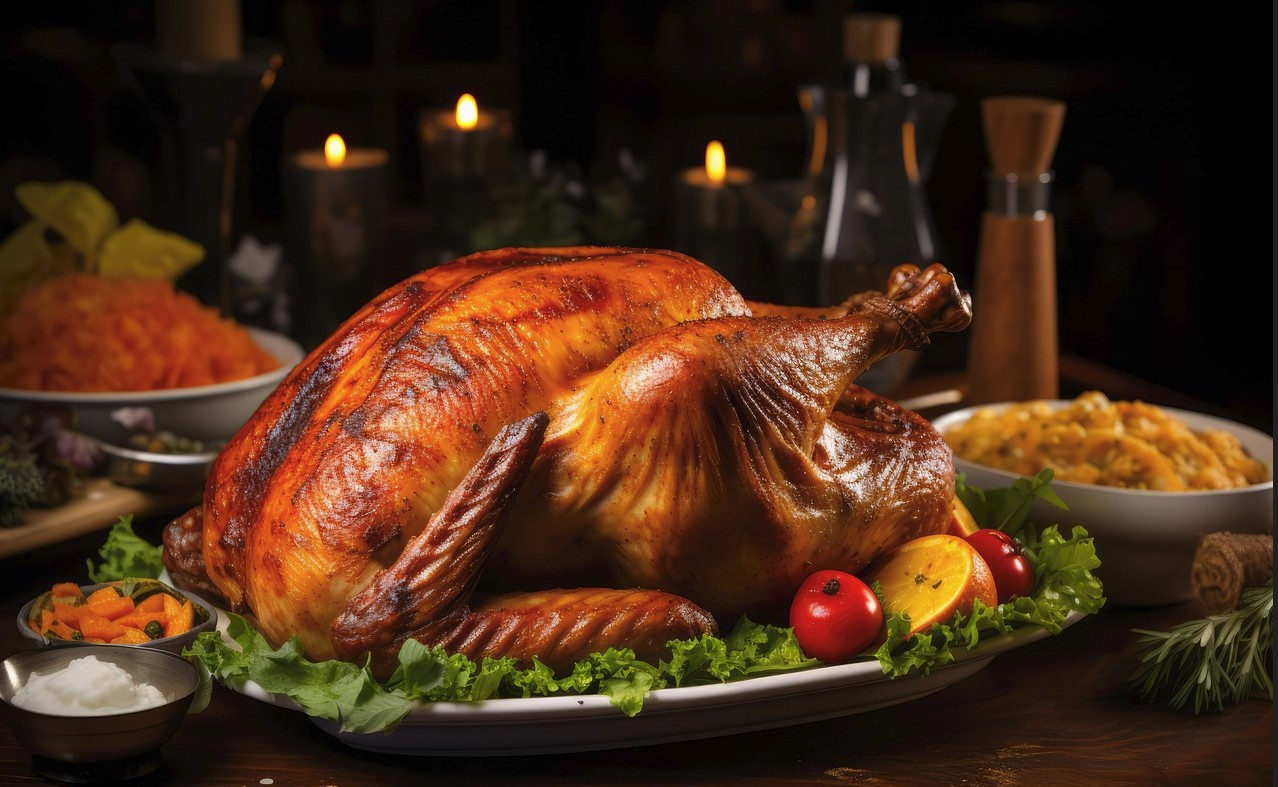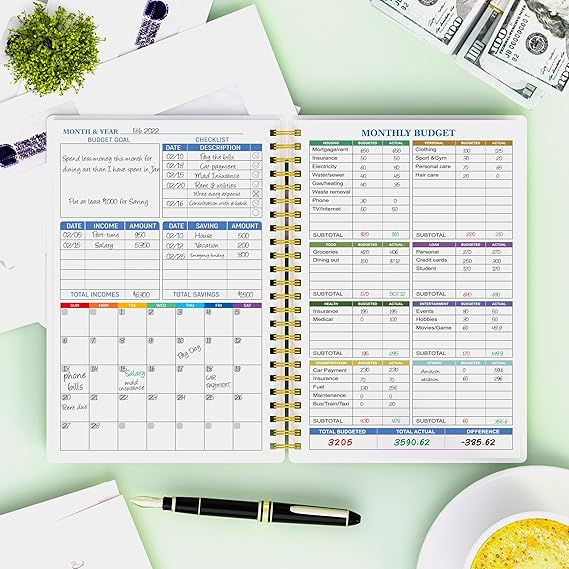Swiping up on endless new arrivals, dropping a cart full of sparkly must-haves, smiling at that dopamine hit from a designer logo—being a “shopaholic” feels fun, maybe even a little glamorous. Fashion and pop culture have turned over shopping into a punchline or a badge, with binge-buying framed as self-care, rebellion or even creative expression. But behind the chic bags and bubbling excitement, a real question emerges: when does the spree stop being harmless and start to signal something deeper? When the Shopaholic Turns into a Serious Disorder.
Compulsive shopping disorder goes far beyond a love of deals or the high of a pricey moment with Chanel or Supreme. It’s marked by a loss of control: shopping impulses become overwhelming, purchases no longer spark joy but bring stress, guilt or even debt. In short, it’s the point where buying isn’t about the goods—it’s about filling an emotional void, even if life, relationships and finances start to suffer.
Knowing the difference matters. Most fashion lovers enjoy an occasional splurge or a well-styled wardrobe refresh, but compulsive shopping is a diagnosable condition that can wreak havoc in silence. Learning where the line is can help you or someone you love step back from the racks and find peace off the sales floor.
Shopaholic’s Delight: A Shopping Notebook for the Fashionista in You

Understanding the Spectrum: Shopaholic Behavior Versus Compulsive Shopping Disorder
Call it what you want—shopping addiction, retail therapy or compulsive cart-filling. The line between loving the hunt for a killer outfit and losing control can feel as fine as silk. To make sense of where everyday shopping stops and a real problem starts, let’s break down what it means to be a “shopaholic” versus when shopping becomes a true disorder.
What Does ‘Shopaholic’ Mean?
 Photo by Angela Roma
Photo by Angela Roma
The term “shopaholic” lives in the world of brunch banter and pop culture confessions. Think of it as someone who loves to shop—sometimes to an extreme—but not always in a harmful way. The vibe is more Carrie Bradshaw showing off Manolos than someone hiding Nordstrom receipts in their desk drawer.
The “shopaholic” label is:
- Used casually to describe someone who shops frequently or for fun.
- Pop culture shorthand for people who feel energized by new purchases.
- Often harmless, as long as spending doesn’t mess with daily life or relationships.
Patterns you’ll spot in a typical shopaholic:
- Shopping as entertainment or a pick-me-up after a hard day.
- Excitement about sales, launches and exclusive drops.
- No major distress if they skip a shopping trip or stick to a budget.
Culturally, “shopaholic” is more a personality trait than a diagnosis. According to Merriam-Webster’s definition, it just points to someone who is extremely fond of shopping—not necessarily someone who needs help. The casual tone is important. Overspending is only a problem if it becomes chronic or creates bigger issues.
Budget Planner – Monthly Finance Organizer

Compulsive Shopping Disorder: Definition and Key Features
Now the mood shifts. Compulsive shopping disorder (also called compulsive buying disorder) is a mental health issue—not a quirky trait. It’s marked by intense, hard-to-control shopping urges and the need to buy things, often without any real want or need.
The clinical picture:
- Recurrent, overpowering urges to shop or buy, even when it causes financial trouble or emotional pain.
- Shopping becomes a coping tool, replacing real emotional resolutions with the thrill of a new buy.
- People feel guilt, regret or shame after purchases, but struggle to stop.
- The pattern is persistent, not just a one-off mall meltdown or sale season slip-up.
What signals the jump from impulsive shopaholic to someone needing help? The symptoms become relentless.
Red flags that signal compulsive shopping disorder:
- Preoccupation with shopping, thinking about it during non-shopping hours.
- Failed attempts to cut back, despite negative consequences (maxed cards, relationship conflict).
- Hiding purchases or lying about spending.
- Feeling anxious or irritable if kept from shopping.
The American Psychiatric Association hasn’t recognized it as an official disorder in the DSM-5, but many mental health professionals see it as real and disruptive. Verywell Mind’s overview on compulsive shopping disorder breaks down these symptoms and their impact. Unlike recreational shopping, this behavior is about compulsion and loss of control, not the thrill of a new bag or the buzz of a summer sale.
Remember, every shopper sits somewhere on the spectrum, from label-loving enthusiast to someone at risk for real trouble. If you recognize these patterns, know that it’s possible to step off the treadmill with the right support and self-awareness. For those interested, Wikipedia’s explanation of compulsive buying disorder explains how this cycle works.
Not every overzealous shopping spree signals disorder. But when shopping morphs from joy to obligation (or from trend to torment), it’s time to rethink what’s really in the bag.
Diagnostic Criteria: When Does a Habit Become a Disorder?
Everyone loves a little retail buzz, but compulsive shopping disorder is a different story. So, where’s the line? Experts use a specific set of clues—think patterns, feelings, and persistence—to separate shopaholic quirks from a real diagnosis. Let’s break down what clinical professionals look for when deciding if the urge to splurge has crossed into clinical territory.
Core Diagnostic Symptoms and Duration
 Photo by MART PRODUCTION
Photo by MART PRODUCTION
Clinicians don’t label every shopping binge a disorder. They look for a repeat performance—a collection that runs longer than a flash sale.
Here’s what defines compulsive shopping disorder, based on current expert consensus:
- Persistent, overpowering urge to buy: Not just a love for shopping, but an uncontrollable drive to purchase, even if you try (and fail) to resist.
- Loss of control: Purchases stack up, even when budgets, plans, or common sense say stop. Think recurring failed attempts to cut back or stick to limits.
- Shopping as emotional control: Many use shopping to numb distress or lift a low mood. The compulsion kicks in most when feelings spiral—shopping is the quick fix.
- Significant preoccupation: Shopping dominates thoughts, spilling into daily routines and downtime.
- Ignoring consequences: Despite debt, guilt or stress, the cycle continues. Those shoes might be new, but the result is déjà vu.
- Symptoms last at least 6 months: According to research-reviewed criteria like those proposed in this clinical review, a true disorder isn’t about Black Friday or birthday blowouts. The pattern sticks around for half a year or more.
If someone ticks these boxes, they’re no longer just “extra” about shopping. It’s a stubborn, ongoing pattern that resists willpower and logic.

Impact on Daily Life and Mental Health
A shopaholic might blow a bonus on Balenciaga. Someone with compulsive shopping disorder can lose more than just money. The difference is impairment—how much the behavior trashes daily life and well-being.
Here’s how that fallout looks:
- Financial mess: Debt, drained savings, secret accounts or maxed cards.
- Relationship strain: Arguments, secrecy, trust issues, even breakups.
- Mood swings: Joy when buying morphs into guilt, shame, or anxiety after the bags hit the closet.
- Work and school trouble: Missed deadlines, distraction or even absenteeism.
Compare it to habitual overspending. That’s the shopper who gets carried away sometimes, but bounces back post-splurge. True disorder brings real-life damage. Guilt lingers, the urge to shop returns, and daily function gets hijacked.
The distress isn’t just about stuff—it’s about feeling out of control. Many with shopping disorder also battle depression or anxiety, according to recent research on the disorder’s impact. Shopping stops being fun and starts being a desperate escape.
If shopping drama has become the main theme of your life, not just a subplot, it’s time to rethink the script. The key marker is impairment—when the pattern chips away at happiness, security, or self-image. Fashion-forward, yes. Functional, no.
For anyone questioning whether their “habit” qualifies as something bigger, pay attention to the wreckage. If the consequences ripple out and take over, it’s a wake-up call best not ignored.
Signs, Symptoms, and Red Flags of Compulsive Shopping Disorder
Recognizing compulsive shopping disorder is like spotting the difference between everyday fashion flair and a closet collapsing under hidden bags. While most shoppers enjoy the thrill of a deal, those struggling with compulsive buying move through a much darker cycle. The signs are about more than sharp outfits or towering shoe boxes—they show up in habits, moods, and even in the secrecy that surrounds every swipe. Let’s break down the unique behavioral and emotional clues that separate ordinary shopping from a full-blown disorder.
Behavioral Warning Signs and Phases
 Photo by Angela Roma
Photo by Angela Roma
Think of compulsive shopping as a four-act play that unfolds again and again:
- Anticipation and Planning
It usually starts with a buzz—the planning stage. The person feels a strong urge to browse, stalks sales online, or mentally builds a wishlist. They may daydream about the next purchase, setting the stage for a buying binge. - Shopping and Buying
Now, the action—shopping in-store or online. This step isn’t about need, but about the high or relief buying brings. The momentary thrill is almost addictive. - Regret and Guilt
The fallout comes quick. Buyers feel regret, sometimes almost instantly. Shame, guilt, or panic about the cost or consequences take the spotlight. - Repeat and Hide
Secrets pile up with shopping bags. Many start to hide receipts, stash items, or downplay what they spent. The behavior repeats—despite clear negative consequences.
Spotting compulsive buying means looking for more than a love of trends. Common behavioral red flags include:
- Buying things you don’t need, just for the rush.
- Repeating shopping sprees, even after trying to cut back.
- Feeling out of control when the urge to shop hits.
- Lying to friends or family about purchases or hiding evidence.
- Shopping more when stressed, angry, or sad.
- Continued shopping despite debt or major financial issues.
Browse any clinical checklist, and you’ll see these are not just habits—they’re patterns unique to the disorder. People often repeat these phases like a broken record, feeling driven by urges that override common sense. These aren’t isolated splurges but a persistent loop that leads to regret and real-life problems. You can read more about these warning signs in the feature “Shopping Addiction: Signs, Types & Causes” at Sierra Vista Hospital or get a succinct breakdown in the Top 10 Signs Of Shopping Addiction.
Psychological and Emotional Triggers
The plot thickens with emotions. Most compulsive shoppers describe using shopping as a quick fix for bad moods. The underlying drivers are more about managing feelings than chasing trends or collecting brands.
Negative emotions become the main trigger. Whether it’s anxiety, stress, loneliness, or boredom, shopping acts as an emotional crutch. The relief is short-lived, but the pattern persists.
Key psychological symptoms include:
- Mood swings linked to purchases. Joy, excitement or calm during shopping quickly shift to guilt or shame after.
- Impulse-control issues. The urge to buy feels unstoppable, no matter logic or consequence.
- Obsession with shopping thoughts. Even when not buying, thoughts about sales, products, or shopping experiences dominate the mind.
Compulsive shopping disorder often walks hand in hand with other mental health issues. Anxiety, depression, or other impulse-control disorders are common partners-in-crime here. This comorbidity makes the disorder extra stubborn and harder to address.
Risk factors and contributing causes include:
- A personal or family history of mental health issues.
- Chronic stress or recent trauma.
- Genetics—some research suggests a hereditary link to impulse-control problems.
Stress is especially influential. Recent studies, including new findings in the field, confirm a direct link between higher stress levels and more intense compulsive shopping symptoms. See the research on stress and compulsive buying-shopping disorder for up-to-date science on this connection.
The most common emotional triggers look like:
- Fighting low self-esteem with designer dopamine.
- Shopping as self-soothing during tough times.
- Replacing other coping habits (healthy or unhealthy) with a spending binge.
Understanding these signs—both visible and hidden—can help anyone spot when shopping has crossed the line. If regret, secrecy, and emotional distress have become closet staples, it’s time to rethink what’s fueling those purchases. For even more details on psychological and emotional triggers, visit the comprehensive guide at Sierra Vista Hospital.
Differentiating Between Impulsive Buying, Shopaholic Tendencies, and Compulsive Shopping Disorder
Modern shopping habits can look a lot like a sliding scale, but there’s a world of difference between a cheeky impulse buy, a true shopaholic moment, and the pattern of compulsive shopping disorder. Each brings its own set of cues, motivations, and—if left unchecked—consequences. Drawing these lines helps make sense of when a binge is just for fun and when it’s time to take a closer look at what’s really driving those swipes.
Impulse Buying vs. Compulsive Shopping: Illustrate the Difference in Motivation, Frequency, and Psychological Drivers
 Photo by Ivan Samkov
Photo by Ivan Samkov
Shopping can go from spontaneous thrill to sticky compulsion in a snap. Let’s break down each style:
- Impulse Buying:
This is that pop of excitement when you spot neon trainers at the checkout or get wowed by a flash sale alert. Impulse buying is all about the “in the moment” spark. You hadn’t planned the purchase. Maybe you give in to a great deal, a clever display, or even a bad mood. The purchase often feels random and isn’t tied to any deep emotional need. Most shoppers fall into this some of the time—think of stocking up on candles just because they were BOGO or grabbing a magazine by the register. Scenario:
Paige spots a limited-edition lipstick at Sephora. She buys it on a whim. She might regret it later, but it was a one-off splurge, not part of a bigger pattern. - Shopaholic Tendencies:
This is where the habit gets a little more stylized and consistent. Shopaholics love the rush of a new haul and plan their week around sales or mall trips. The shopping is frequent, sometimes even a regular mood booster, but it doesn’t always wreck their life or budget. It’s the friend who fills every closet in the house, but still feels mostly in control. Scenario:
Lucas scrolls new sneaker drops every week and buys often. Sometimes he overspends, but he manages to pull back or save up when needed. - Compulsive Shopping Disorder:
Here’s where things flip from pleasure to pattern. Compulsive shopping isn’t about the stuff—it’s about chasing relief from stress, anxiety, or sadness. Shopping morphs into a ritual for coping or even self-punishment. The urge is constant, the spending can’t be managed, and real life starts to fall apart. This goes way beyond buyer’s remorse. Scenario:
Maya feels her anxiety rising before work. She shops online before logging in, not because she wants anything, but because buying something is the only thing that soothes her dread. Her credit cards keep rising and she hides packages from her partner.
It’s easy to blur these behaviors, but the real difference lies in:
- Motivation:
Is the shopping fun, or an emotional escape? - Frequency:
Is it an occasional treat or a daily need? - Control:
Can you stop when you want, or does it feel impossible to resist even when you know you should?
The Verywell Mind comparison of impulsive and compulsive shopping offers a deeper breakdown of these psychological drivers, if you’re curious where you fit on the scale.
When to Seek Help: Key Distinguishing Factors
Knowing when you’ve crossed from “shopaholic” to clinical compulsive buying isn’t just about the number of Amazon boxes on your porch—it’s about the deeper patterns and fallout in your daily life. If you’re wondering when to ask for help, look at the official checklists.
Core criteria for compulsive shopping disorder include:
- Strong, repetitive urges to buy—no matter the need or consequences.
- Preoccupation with shopping that disrupts daily routines.
- Failed attempts to control or stop shopping.
- Buying things just for the short rush, not from desire or usefulness.
- Continuing to shop even when it causes financial, emotional, or relationship harm.
Clinical experts often use self-assessment tools and behavioral interviews to help spot the disorder. See the proposed diagnostic criteria summarized by the NIH for a clinical take on compulsive buying. These highlight not just the impulse, but how deeply the urge controls everyday actions.
Warning signs that it’s time to seek help:
- Secretive or deceptive behavior about spending.
- Persistent feelings of shame, anxiety, or regret about shopping.
- Conflict or tension with loved ones over spending habits.
- Escalating financial trouble—maxed credit cards, mounting debt, or unpaid bills.
Taking an honest look is the first step. If you check off most of the boxes above, consider:
- Self-assessment tools.
Try the Shopping Addiction Self-Test to see if your habits tip into the danger zone. - Professional evaluation.
Therapists and counselors use structured interviews and questionnaires to confirm diagnosis. While the DSM-5 doesn’t list compulsive buying as its own disorder, guidelines from recent psychiatric research are widely used. - Consider comorbidities.
Compulsive shoppers often battle anxiety or depression as well. Treating the underlying mental health struggles is key to healing. Self-diagnosis is a starting point, not the finish line. If your shopping habits have started to define your self-worth, routine, or relationships, you’re not alone—and help is available.
Knowing these differences can turn a guilty scroll into a clear sign it’s time to kick the habit, or just learn to hit pause on the next payday treat.
Treatment, Management, and Prevention of Compulsive Shopping Disorder
When the thrill of the buy starts to rule your budget and mood, it’s time to talk solutions. Real help goes far beyond a shopping ban or deleting payment apps from your phone—though, let’s be honest, those are decent first steps. Compulsive shopping disorder responds best to a mix of therapy, real-world support, and developing new habits that break the cycle of temptation and regret. Here’s how people are finding relief, balance, and finally putting their wallets (and wardrobes) back in check.
Evidence-Based Therapies and Interventions
When compulsive shopping disorder gets in the way, clinical research points to a blend of therapy, medication, and support. Here are standout options:
Cognitive-Behavioral Therapy (CBT)
CBT has a proven track record in helping people understand and change harmful shopping patterns. It targets dysfunctional beliefs, challenges emotional triggers, and builds healthier coping skills.
5 Examples of Evidence-Based Therapies
- CBT with impulse-control focus: Tackles thoughts and urges to shop impulsively.
- Motivational interviewing: Strengthens commitment to change.
- Acceptance and commitment therapy (ACT): Encourages commitment to new, positive behaviors.
- Dialectical behavior therapy (DBT): Teaches distress tolerance skills.
- Group therapy: Offers shared insight and community accountability.
Pharmacological Options
Medication isn’t usually the first step, but it can help when other methods alone aren’t enough, especially if anxiety, depression, or bipolar disorder co-exist.
5 Medication Options Sometimes Used
- SSRIs (Selective serotonin reuptake inhibitors): Help ease underlying mood problems.
- Mood stabilizers: Beneficial if there’s an overlap with bipolar disorder.
- Naltrexone: Sometimes helps with impulse-control.
- Anti-anxiety meds: Only for short-term or specific situations.
- ADHD medications: Rarely, but can help with impulse regulation in some.
Read more about treatment options in this helpful guide: Compulsive Shopping: A Guide to Causes and Treatment
Support Groups
Peer support makes the difference between going it alone and building lasting change. Being part of a group puts structure and encouragement into recovery.
5 Community Options for Support
- Shopaholics Anonymous: Structured 12-step meetings, both in-person and virtual.
- Debtors Anonymous: For those whose shopping leads to financial woes.
- Online recovery forums: Spaces like Reddit’s r/shoppingaddiction.
- Therapy-based support groups: Led by licensed professionals.
- Local mental health organizations: Often host workshops and ongoing support.
Discover a list of support groups and what to expect at Shopaholics Anonymous: Finding Support for Compulsive Shopping.
Financial Counseling
Financial education is a must for shopaholics. A money pro can help you triage debt, create a sustainable budget, and rebuild your confidence around spending.
5 Approaches to Money Management
- Personal financial counseling sessions
- Debt repayment plans
- Budget setup and tracking tools
- Credit repair programs
- Workshops focused on responsible spending
Self-Monitoring and Triggers Management
Gaining awareness of when and why you shop paves the way to recovery.
5 Practical Methods
- Keep a shopping diary: Track every purchase and mood.
- Identify triggers: Pinpoint the people, places, or feelings that prompt you to shop.
- Set clear boundaries: Only shop with a list or during planned times.
- Delay tactics: Wait 24 hours on any purchase decision.
- Mindful shopping exercises: Pause, breathe, and ask if you really need the item.
More info on systematic review of clinical treatments: Treatments for compulsive buying: A systematic review
Self-Help Tips and Prevention Strategies
Managing compulsive shopping isn’t a one-size-fits-all deal. But a few key moves help stop the cycle before it snowballs.
- Identify what triggers your urge. Is it stress, boredom, or a need for validation? Naming it dulls its power.
- Create shopping boundaries. Only buy what’s on your pre-set list. Avoid browsing “just for fun.”
- Cash over credit. Use real money for purchases. No card, no digital wallet, less chance for mindless swiping.
- Enlist accountability. Share your goals with a trusted friend who’ll keep you honest.
- Declutter often. Letting go of surplus reminds you to value what you have before adding more.
- Practice mindfulness. Slow down. Notice your emotions and ask yourself if shopping solves or masks a problem.
- Budget with intention. Know your limits. Set spending goals for things you truly enjoy (travel, hobbies, tech).
- Use a shopping diary. A simple notebook or smartphone app gives you a snapshot of patterns and problem points.
Impulse control is a muscle. Show up for it daily, and it gets stronger. Setbacks happen, but trends change—so can your habits.
Impact and Effects
Compulsive shopping disorder doesn’t just empty wallets; it takes a toll on relationships, health, and happiness. The effects ripple through all areas of life, from constant stress about debt to major trust issues at home.
More about the effects:
- Damage to friendships, marriages, and self-esteem
- Long-term financial pressure, credit woes, and even bankruptcy
- Increased anxiety, depression, and overall life dissatisfaction
- Trouble with work performance or even job loss
Find more details and personal takes on the impact and dangers here:
For clinical depth, including the psychological and relational fallout, review the research at Treatments for compulsive buying: A systematic review.
Stories and Real-Life Experiences
Personal stories bring hope and show that overcoming compulsive shopping is possible. Many share their journeys online, detailing setbacks, small wins, and moments of clarity. These voices de-stigmatize the struggle, foster connection, and offer inspiration to others in the same boat.
Look for relatable experiences on forums, blogs, and recovery platforms, where people discuss everyday challenges like hiding receipts, relapsing after stressful days, or the relief of living debt-free for the first time in years.
Resources and Support
You’re not alone—and you don’t have to battle shopping addiction without tools. There’s a growing wave of support, online and off, for anyone seeking recovery.
A few standout places to find help:
- Shopaholics Anonymous: What to Expect and How to Start
- Self-Help Groups for Shopping Addiction
- Debtors Anonymous and Other Recovery Groups
Support groups aren’t just about “sharing” feelings. They create action plans, track progress, and encourage personal responsibility. If you’re ready for a deeper sea change, look for educational books, hotlines for emotional support, and credible mental health organizations.
Search Intent: Informational, Help-Oriented, Lived Experience
Most searches on compulsive shopping reflect three main motives:
- Gaining knowledge: How does this disorder work? What can I do about it?
- Finding help: Where can I get support, treatment, or peer encouragement?
- Relating to lived experience: Am I alone in this? What do other people’s journeys look like?
Blending these answers into one post connects expert advice with relatable stories. It builds trust and lets readers spot themselves—or loved ones—in both the symptoms and the solutions. Link out to expert guides, clinical resources, and personal essays about shopping addiction to help every reader find what they need most.
Budgeting for the Shopaholic
When shopping becomes more than just a weekend hobby and sneaks its way into every part of your mood, mind, and wardrobe, it’s time to put your receipts under a microscope. Even the most style-obsessed shopaholic can build a budget that feels empowering, not restricting. Think of it like a creative challenge: how can you curate your closet without letting your finances unravel? With the right tools, tracking, and a bit of honest math, even serious spenders can become style-smart savers.
Shopping Addiction Affirmations for Shopaholics Workbook

Set a Firm Budget: The 10/10/80 Split
Trendy hauls don’t have to mean endless overdraft alerts. For the shopaholic, a strict-but-stylish budget formula works best. One of the most fashion-forward approaches is the 10/10/80 split:
- 10% splurge fund: for those must-have bags, boots, and on-sale luxe moments. Guilt-free.
- 10% long-term savings: untouched, even if that “vintage” trench is calling your name.
- 80% for real life: rent, utilities, groceries, work wardrobe—everyday essentials.
This formula brings balance. Your “treat yourself” moments are built right in. Swap percentage points depending on your lifestyle but always set a specific monthly limit for shopping. Those with a history of overspending do best with concrete caps.
30 Days to Stop Being a Shopaholic: A Mindfulness Program with a Touch of Humor

10 Real-World Budgeting Examples and Printables for Shopaholics
Truly ready to trim your tab? Start with a budget sheet built to last. The internet offers endless options—think bold colors, sleek charts, and trackers you’ll actually want to fill out. These aren’t just spreadsheets; they’re your fiscal front row.
Here are ten budget templates and planners (from classic to chic) that put structure in your spend:
The Shopaholic’s Budget Planner

- The Consumer.gov Budget Worksheet:
This straightforward printable is government-backed and takes you from monthly costs to savings goals. Make a Budget – Worksheet - Canva’s Customizable Budget Planners:
Play designer while managing your money. Chic, totally customizable, and shareable. Browse and print at Free and customizable budget templates - Printabulls’ Finance Printables:
Full range of printable worksheets—monthly, savings, bill tracking, debt payoff. Finance Printables & Budgeting Worksheets - Microsoft Budget Templates:
Download an array of budgets, from everyday spending to wedding or trip plans. Free budget templates - NerdWallet’s Free Budget Tools:
A roundup for digital and paper lovers, including the buzzworthy 50/30/20 budget. Free Budget Spreadsheets and Tools - Pinterest’s Stylish Monthly Budget:
Instagram-worthy layouts for your monthly plan. Free Printable Monthly Budget Worksheet Template - Bangor Money Mentor Guides for Overspenders:
Case-study examples that show how shopping sprees impact the rest of your budget. How Overspending Can Impact a Budget - DePaul’s Solutions for Overspending:
Honest templates help you sort wants from needs, plus a guilt-free way to prioritize. Solutions for Overspending - Debt Payoff & Monthly Tracker (Reddit):
A beloved favorite among fashionistas climbing out of debt. Debt Payoff & Monthly Budget Tracker - Annual Savings Budget via Microsoft:
Stylish spreadsheets to map out long-term fashion funds and luxury investments. Free budget templates
Each of these resources gives you a chance to picture your next year’s purchases and see how every pair of boots stacks up against your five-year savings target.
Confessions of Why I need a Budget: I’m a Shopaholic

Long-Term Savings: Outfitting Your Future
Anyone who can plan a wardrobe six months ahead can turn the same energy toward saving goals. Long-term budgets do more than keep you out of credit card wreckage—they tee up splurges that actually fit your life. Set aside a percentage (even if it’s small) for major goals: dream trips, a coveted watch, or a high-end capsule collection.
Explore digital savings-planning tools and printable annual budgets on Microsoft’s budget templates or scroll NerdWallet’s expert savings advice.
Pro Tips for the Serial Spender
- Always “shop” your own closet before hitting checkout.
- Try cash envelopes or prepaid cards for monthly shopping allotments.
- Print and fill out a fresh budget sheet every month—keep old ones for comparison.
- Share your budget with a friend (the accountability is priceless).
- Use a visual tracker, like a calendar or Instagram story, to keep your goals front-and-center.
For even more real-life structure and apps made for overspenders, check out the best budgeting apps of 2025 and “compulsive shopping cheat sheets” direct from recovery bloggers (see here).
Curating your closet is just one part of your style story—curating your spending is the real badge of chic confidence. With the right tools and a dash of discipline, your budget can be every bit as tailored as your favorite blazer.
How to Create a Budget for One with Compulsive Shopping Disorder
When shopping feels more like an escape hatch than an afternoon treat, a solid budget isn’t just smart—it’s a lifeline. For someone dealing with compulsive shopping disorder, structure creates clarity and brings the chaos of spending back under control. Think of your budget like a capsule wardrobe: every piece clear, intentional, and curated for what matters. This isn’t about strict limits that feel like a straightjacket. It’s about designing your finances so they match both your needs and your style ambitions.

Photo by Kaboompics.com
Ground Rules: Budgeting for Compulsive Shopping Disorder
Set your foundation first. Budgeting for compulsive shopping disorder needs more than old-school “spend less, save more” advice. The approach is part financial safety net, part mindset shift, and a huge dash of accountability.
Here’s what works best:
- Always start with your essentials. List rent, food, utilities, and other non-negotiables.
- Identify your triggers and pattern times when overspending happens. Awareness matters.
- Build your “safe to spend” amount last, not first. It stops retail FOMO before it starts.
- Choose digital or printable budgeting tools that you’ll actually use. They need to feel personal, not clinical.
Remember, a strong budget highlights what works in your favor—and quietly armor-proofs you from weak moments. Pair it with external accountability for best results (think a friend, therapist, or support group).
Printable Budgets: 10 Sites with Free (and Actually Usable) Templates
Having physical worksheets is like keeping your receipts front and center—no more hiding. There’s real power in putting pen to paper, especially when the temptation to spend is a swipe away. These printables blend function with style, so your budget feels less like punishment, more like a project.
Here are 10 sites brimming with printable budget tools (from polished to playful):
- Free and customizable budget templates on Canva
- Printable Budget Templates by OnPlanners
- Microsoft’s Free Budget Templates
- Consumer.gov’s Budget Worksheet
- Printabulls Finance Printables
- Google Sheets Budget Templates
- NerdWallet’s Free Budgeting Printables
- Vertex42 Budget Templates
- Money Under 30 Budget Worksheets
- The Balance’s Budget Printables
Each worksheet offers a different vibe. Whether you want Instagrammable design, hyper-detailed categories, or a minimalist checklist, pick the one that matches your energy.
Online Budgeting: 10 Budget Tools That Make Spending Less Stylish
Prefer digital dashboards? These sites and apps make it simple to log every latte and late-night cart add, right from your phone or laptop. Crisp graphs, real-time alerts, and downright chic interfaces turn boring math into something you actually want to scroll.
These 10 online budgeting tools help keep your shopping impulses in check:
- Mint: Budget Tracker & Planner
- YNAB (You Need A Budget)
- EveryDollar
- PocketGuard
- Goodbudget
- Personal Capital
- Revolut Budgeting
- Rocket Money
- Simplifi by Quicken
- Spendee
Want to go even deeper for real-world advice from those who’ve been there? Read community suggestions on the best app to help with shopping addiction. This thread is packed with honest opinions about which tools actually help curb those midnight binges.
Building Emotional Reinforcement Into Your Budget
For compulsive shoppers, a budget on its own is rarely enough. You need emotional reinforcement and strategy to make it stick.
Try these smart moves:
- Use journals or notes beside big expenses to track your feelings in the moment.
- Pair your budget review with a weekly check-in from a mentor or friend.
- Celebrate small wins. Saved $20? Treat yourself—to a walk, playlist, or celeb-inspired vision board, not another top.
- Tie your budget to a specific goal that excites you (like a travel fund or a special celebration).
- Bookmark an article that rewires your mindset. Read through shopping addiction symptoms and how to take action if cravings sneak up.
Budgeting with a compulsive shopping disorder isn’t about rigid control—it’s about crafting a system that keeps your style, sanity, and savings all in check. The right worksheets, apps, and routines turn your monthly plan from anxiety-inducing to empowering. Save your receipts, track your triggers, and step confidently into each new season—on your terms, with your wallet intact.
What is the Difference in the Budgets for the Shopaholic and Compulsive Shopping Disorder?
When it comes to budgeting, the line between a savvy shopaholic and someone dealing with compulsive shopping disorder isn’t just about how much you spend. It’s about intention, control, and structure. Shopaholics often find joy in shopping, treating it as entertainment or stress relief, while still maintaining a loose sense of boundaries. Compulsive shoppers, on the other hand, face a battle with urges—budgeting becomes a safety net, not just a spending guide.
Let’s break down what sets these approaches apart and spotlight the budgeting tools that match each lifestyle.
Shopaholic Budgets: Flexible, Aspirational, and Sometimes Risky
 Photo by Kaboompics.com
Photo by Kaboompics.com
Shopaholic budgets look stylish on the surface. They blend short-term splurge planning with a sprinkle of responsibility. Many fans of retail therapy give themselves a monthly “fun fund,” tracking only major purchases and loosely following spending rules.
For most shopaholics, a typical budget:
- Includes categories for clothing, beauty, tech, and eating out
- Offers wiggle room for unplanned shopping bursts
- Works best with simple, eye-catching templates or digital planners
- Takes a positive, reward-based approach (splurging as a treat, not a crime)
Shopaholic budgeting tools are all about ease and aesthetics—think colorful printables, well-designed spreadsheets, or apps that turn tracking into a challenge. They’re not meant to restrict, but to help justify the next Zara drop or full-glam Sephora haul.
I Am Not a Shopaholic: Adult Budget Planner

Some top picks for printable budget templates designed for stylish spenders:
- Free Printable Monthly Budget Planner – Pinterest
- Free and customizable budget templates (Canva)
- Printable Budget Templates – OnPlanners
The goal is balance: enough structure to keep debt in check, enough fun to keep shopping fresh.
Compulsive Shopping Disorder Budgets: Guardrails, Accountability, and Mindful Structure
Budgeting for compulsive shopping disorder takes the style stakes in another direction—think structured, honest, and emotionally safe. For someone facing compulsive urges, budgeting must be intentional, less about shopping freedom and more about personal guardrails.
Here’s what sets a compulsive shopping disorder budget apart:
- Every dollar gets assigned a job. Non-essential spending is capped hard.
- Budgets are paired with tracking tools, journals, or therapist check-ins.
- Spending triggers are built in: you plan for emergencies, bad days, and the urge to overshop.
- Printables and especially apps offer reminders, alerts, and visual cues (pop-ups, red lines, daily check-ins).
- The boundary between “need” and “want” is monitored weekly, sometimes even daily.
This approach borrows from classic personal finance but gowns it with more checklists, daily logs, and accountability prompts. Printables move from “cute tracking” to “clear limits.” Online budgeting apps get set up with automatic alerts and transaction pop-ups to prevent mindless swiping.
Top online budgeting tools tailored for structure and fast response include:
- Best Budgeting Apps of 2025 – CNBC
- The Best Budget Apps for 2025 – NerdWallet
- Best of Buy Side Awards 2025: Budgeting Apps – WSJ
Apps like YNAB and PocketGuard are popular—not for their style, but their precision. They block overspending before it starts.
Key Takeaways:
- Shopaholic budgets embrace the joy of splurging with flexible limits and beautiful design.
- Compulsive shopping disorder budgets enforce strict boundaries, heavy tracking, and emotional safety nets.
- The right printable or app depends entirely on your needs: fun and freedom versus structure and support.
A classic closet transforms with the right wardrobe staples. The same goes for your money—a supportive, honest budget (whether for fun or for recovery) is always in style.
The shift from shopaholic to compulsive shopping disorder is subtle at first but grows clearer as consequences pile up.
The shift from shopaholic to compulsive shopping disorder is subtle at first but grows clearer as consequences pile up. Once the urge to buy becomes overwhelming, spending sabotages your priorities, and secrecy or distress takes hold, you’ve left retail therapy behind and stepped into the realm of a diagnosable disorder.
Spotting this transition early is a power move—think of it as the fashion edit your life might desperately need. Raising the topic with empathy, whether for yourself or someone you love, paves the way for support and change. If shopping feels less like fun and more like fallout, take that cue to seek help or reach out to a trusted source.
Style evolves, so can habits. Thanks for spending time on this important read. If you or a friend see these patterns, don’t hesitate to ask questions or share your story in the comments. Awareness is always in style.

Affiliate Links: The items live on repeat in my closet or on my desk. The items I do not have yet are ones I’m saving for. Shop them via the links above. If you decide to swipe something for yourself, I may get a small thank-you in the form of coffee money ☕—no extra cost on your end, just a little perk for sharing things I swear by. ☕️✨











